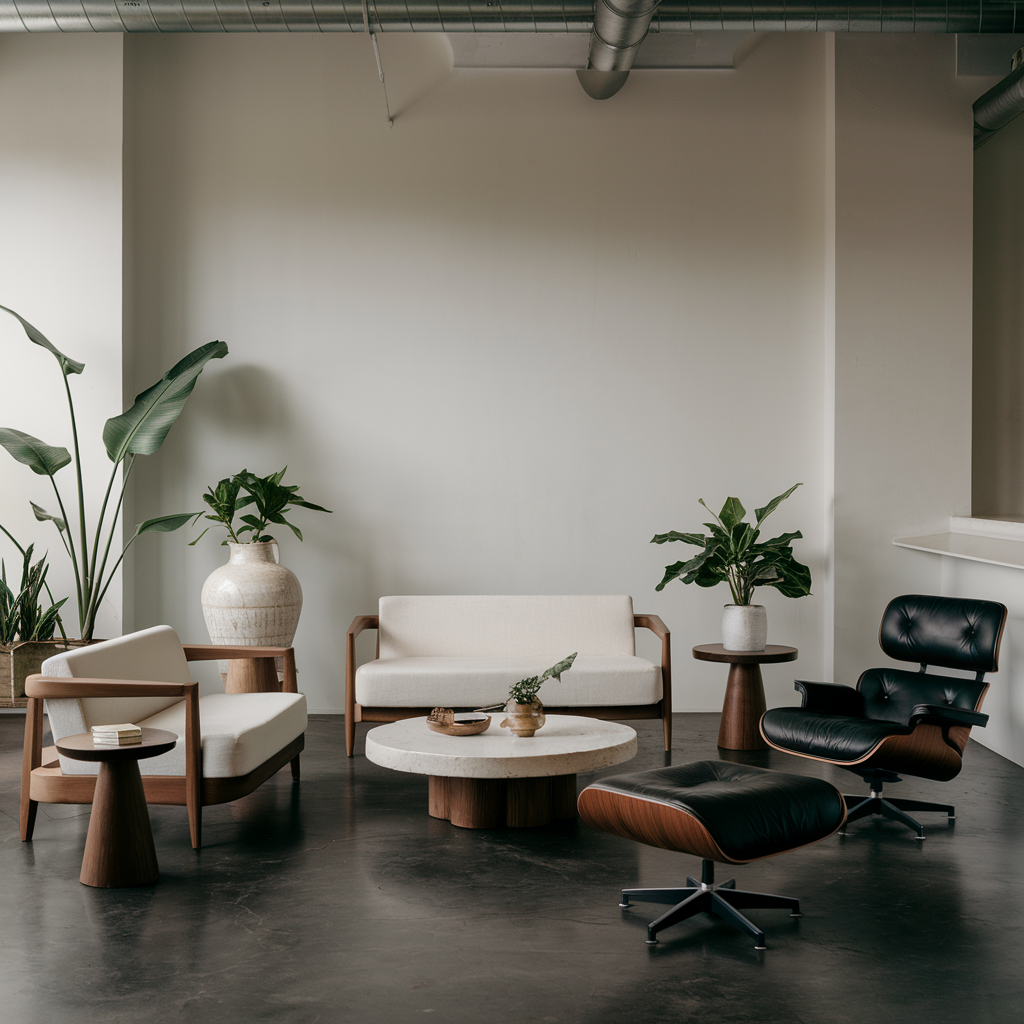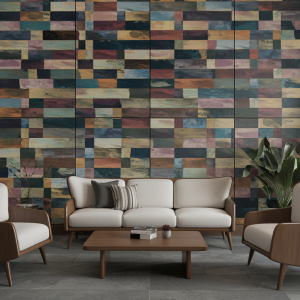1111111

When you think of interior design, the lighting is usually overlooked in the importance of furniture and color palette. The reality is that it is an integral part of your space’s overall productivity and mood. Sunlight can be invigorating while a well placed lamp can add dimension and polish to your design. Knowing how to best use these components can elevate an average room to something special. So what are the main things to grasp to ensure that your lighting works in your favor?
The Importance of Sunlight
The importance of sunlight cannot be ignored when selecting an interior designer because it helps define, shape and uplift the place’s overall atmosphere. When letting in sunlight, the room feels cozy and relaxing, something that cannot be offered exclusively by light fixtures. Homes can make the most out of sunlight by placing windows in favorable positions and using lighter drapes. Decoration includes color choice but don’t ignore how sunlight interacts with them. With light walls, your room will receive abundant sunlight while feeling more open, and spacious. The room’s atmosphere is made dynamic and alive due to the everchanging light patterns throughout the day. Additionally, placement of mirrors can stretch the overall effect of sunlight. They also enable the illusion of larger rooms while increasing light within the space. To stretch the benefits of sunlight, try arranging furniture in sunlit areas. And don’t ignore the health benefits. Your circadian rhythm is supported, and your energy levels and mood improve when in the presence of natural light.Different Kinds of Lighting Fixtures
Lighting fixtures play an important role in interior designing as much as they do when it comes to giving light. Selecting fixtures require consideration of the available options to improve your design. First, we have ambient lighting which is the primary source of light in a room. In most instances this is achieved by installing ceiling-mounted fixtures or using chandeliers. Then, there is task lighting which is essential for certain activities, such as reading or cooking. This can be accomplished with table lamps or under-cabinet lights. Accent lighting adds style and highlights key parts to be noticed, such as artwork or ornaments. These can be elegantly positioned using wall sconces or track lighting. Let’s not forget decorative lighting, which acts as the eye-catching piece, yes, combining function with style such as unusual pendant lights or sculptural fixtures. And finally, if your house has outdoor areas, then outdoor lighting would be beneficial. Lanterns or spotlights can illuminate the peculiars of your house while ensuring safety.Understanding Color Temperature
When it comes to picking the theme that best suits your space, it is vital to be fluent in color temperature. Cool lighting would help energize the room while warm lighting set an inviting space. Furthermore, the Color Rendering Index assists you in determining how well colors are represented under various lighting conditions, which contributes to your design’s overall feel.Warm vs. Cool Lighting
When designed with appropriate color temperature, interiors can looks appealing hence it is essential to know the parameters of color temperature. In the market, there are two common types of light available – warm light and cool light. 2700K to 3000K is characterized by soft and yellowish light that makes an environment more cozy. This type of lighting is ideal for living rooms, bedrooms, or dining places, especially if the occupants want to unwind and feel comfortable. Cool lighting, on the other hand, usually ranges from 3500K to 5000K is best utilized in workstations and kitchens since it gives off brighter bluish light. This kind of lighting gives better visibility, hence why it is suited for places that require focus. It also is able to boost concentration in the space and functioning. The right balance between warm and cool lighting increases functionality while preserving the right atmosphere. Think of the best mood you should experience in each room when choosing your lights. If you’re on the creative side, you can blend both types to build layers of light. With this new knowledge, you’ll be able to make wiser decision that improves your interior design.Effect on Ambient Lighting
In general, the color temperature of your lighting can affect your mood and well-being. It can influence how you feel or use on a daily basis. Let’s say, for example, warm lighting often brings a sensation of relaxation as opposed to cool lighting, which stimulates focus and productivity. Here are some ways different color temperatures can impact your emotions to improve your overall being:- Warm Lighting (2700K – 3000K): This setting fosters a cozy atmosphere, ideal for winding down during the evening or allowing for intimates with love ones.
- Neutral Lighting (3500K – 4100K): This temperature offers clarity without being harsh, making it perfect for workspaces where concentration is key.
- Cool Lighting (5000K – 6500K): This lighting brightens up your space and can enhance alertness, making it suitable for exercise areas or areas that need heightened focus.
- Daylight (6500K+): Can boost energetic productivity when you need a little motivation. This is great for creative spaces.
Color Rendering Index
Color Rendering Index (CRI) or color rendering index tells us how accurate a light source is in rendering colors compared to natural light. When purchasing a source of light for a room or space, you should prioritize the CRI value. A blended white light CRI value above 90 is ideal as it will ensure all of the displayed colors and hues are sharp and enhanced. When dealing with art or any design where colors CRI of light is very critical, you want to choose lights with high CRI guarantee perfection. On the contrary, low CRI will make everything dull and out of focus, standing above all materials. CRIs shall be pondered together with color temperature. Low color temperatures (about 2700K to 3000K) are more inviting; however, higher color temperatures (5000K and above) will help produce more light and thus, boost energy and alertness. With the accurate temperature and CRI, the final impression in space should be positive. Only then will the goals of your CRI knowledge be fulfilled – to set up a harmonious, truly lively space full of wonders of color.Effects to the Atmosphere of the Room
Light can be one of the most potent factors in setting the mood of a room as well as how the rooms makes you feel and move. It can be extremely welcoming or modern and sophisticated, and bits between, it all depends on the light sources put in the room. The following are four ways that lighting affects mood:- Enhancement of Mood: Typical warm lighting aids relaxation and comforting feelings, while unnaturally bright lights are more likely to induce feelings of anxiety and some discomfort.
- Focus and Productivity: Desk lamps as examples of task lighting can greatly improve concentration and productivity, leaving you with a greater sense of achievement at the end of the day.
- Social Engagement: Dim lights during parties and gatherings create a warm environment that enables laughter and deep conversations among family and friends.
- Featuring Attention: Accent lights add a sense of drama and elegance by drawing attention to the artwork or architectural details enlivening a space.
Improving Spatial Awareness
By making good use of lighting, a room can both feel and appear more spacious than it actually is. Strategic placement of windows and light fixtures help to improve even the smallest area’s spatial height. Begin with preserving windows so they remain unobstructed, and using light curtains will allow sunlight to flood in the room. This approach not only brightens the area but also expands it. It’s important to add different types of artificial lighting for some additional depth. For example, you can install recessed lighting and wall sconces to bring the eyes up, which can create the illusion of taller walls. Moreover, consider stratum for your lighting. While ambient lighting can be used for overall illumination, task lighting can be used in specific areas, and accent lighting can be used to emphasize structures or pieces of art. This technique can divide the room and consequently make it less claustrophobic. Use mirrors as a reflective sunlight and lightened room proves to be a bonus trick. These strategies will improve the feel of the rooms by giving the illusion of more spacious rooms, which is efficient for you and your guests to enjoy a more relaxed and inviting environment.Lighting And Mood Developed
 Lighting forms an essential part of mood as it can charm a space and change the way someone interacts with it. When placed right, it essentially transforms a space.
Imagine that the moment you step into an area, the lighting strikes you first. It also seems to dictate the theme of the room even before you check out the area and furnishings. You can leverage that ability to induce a certain feeling in your house or apartment.
Here are four ways lighting can change your mood:
Lighting forms an essential part of mood as it can charm a space and change the way someone interacts with it. When placed right, it essentially transforms a space.
Imagine that the moment you step into an area, the lighting strikes you first. It also seems to dictate the theme of the room even before you check out the area and furnishings. You can leverage that ability to induce a certain feeling in your house or apartment.
Here are four ways lighting can change your mood:
- Warm Lighting: It helps create an atmosphere that is relaxed and comforting, which is ideal for rest.
- Bright Lighting: Will elevate the space, perfect for focused and productive activities such as work.
- Dim Lighting: Imbues a romantic and intimate feel which is good for relaxing or dining.
- Colorful Lighting: Gives a playful, fun, and exciting feel and serves as an avenue for creativity and self expression.
Practical Lighting Solutions
Achieving the ideal ambiance in your space does not have to be challenging. Practical lighting solutions can make any space more appealing and functional. First evaluate the need of every single room. For example, bright lamp shades placed in a central position are ideal for kitchens or working areas. However, softer dimmer lamps are meant for living room and bedroom settings. Think of additionally layering your lighting. Combine different types of lighting, such as ambient, task, and accent lighting for a balanced effect. For reading areas, floor and table lamps should be used while cabinets in teh kitchen should feature lamps for countertops lighting.Effective Lighting Tips
Everyone loves a well lit room. Here are some pointers on how to tailor your lighting style to achieve your preferred feeling in the room. Effective lighting goes beyond highlighting a room’s beauty. It affects a person’s mood too. All the pointers listed below provide some methods on how to achieve effective lighting.- Mix Lighting Types: Use accent, ambient, and task lighting together. Mixing the different types improves depth in the room and helps to properly match the lighting to the activity being performed.
- Right Bulbs: The color tone of the set to be used in the room should also be taken to consideration. Warm colors like yellow create a soft ambiance whereas elements of colder tones like blue help create alertness.
- Use of Dimmers: Dimmers give a personalized touch to the lighting of the room as unlike ordinary switches, they have the ability to adjust brightness. With dimmers, the light can be toned down making it perfect for relaxing evenings.
- Focal Points: Walls equipped with architectural features, artwork, or plants can use wall sconces and spotlights to highlight them. Doing so creates a space that is pleasing to the eyes and at peace with itself.
Conclusion
Lighting can make or break the aesthetics of a space, and “There’s no place quite like home”, as the saying goes. Implementing proper use of natural light and putting in the right fixtures, helps turn spaces into cozy retreats. Remember, the right color temperature will not only increase productivity but can also improve your overall daily experience. Having bespoke solutions paired with nitty-gritty layering will result in a space that is not only good looking but is good for you too! Light up your space and reap the benefits!-
How does lighting affect the mood of a room?
Lighting can completely transform a room. Soft, warm lights create a cozy atmosphere, while bright, cool lights can energize a space.
-
What type of lighting is best for living rooms?
A mix of ambient lighting (overhead lights), task lighting (table lamps), and accent lighting (floor lamps) works best to create balance.
-
Can I use smart lighting in my home?
Yes, smart lighting can add convenience and control. You can adjust brightness and color temperature to suit different activities or times of day.
-
What’s the difference between ambient, task, and accent lighting?
Ambient lighting provides general light, task lighting is focused for specific tasks, and accent lighting highlights artwork or architectural features.
-
How can I make my space feel brighter without adding more light fixtures?
Use light-colored walls, mirrors, and reflective surfaces. These materials bounce light around, making the space feel brighter without more lighting.
